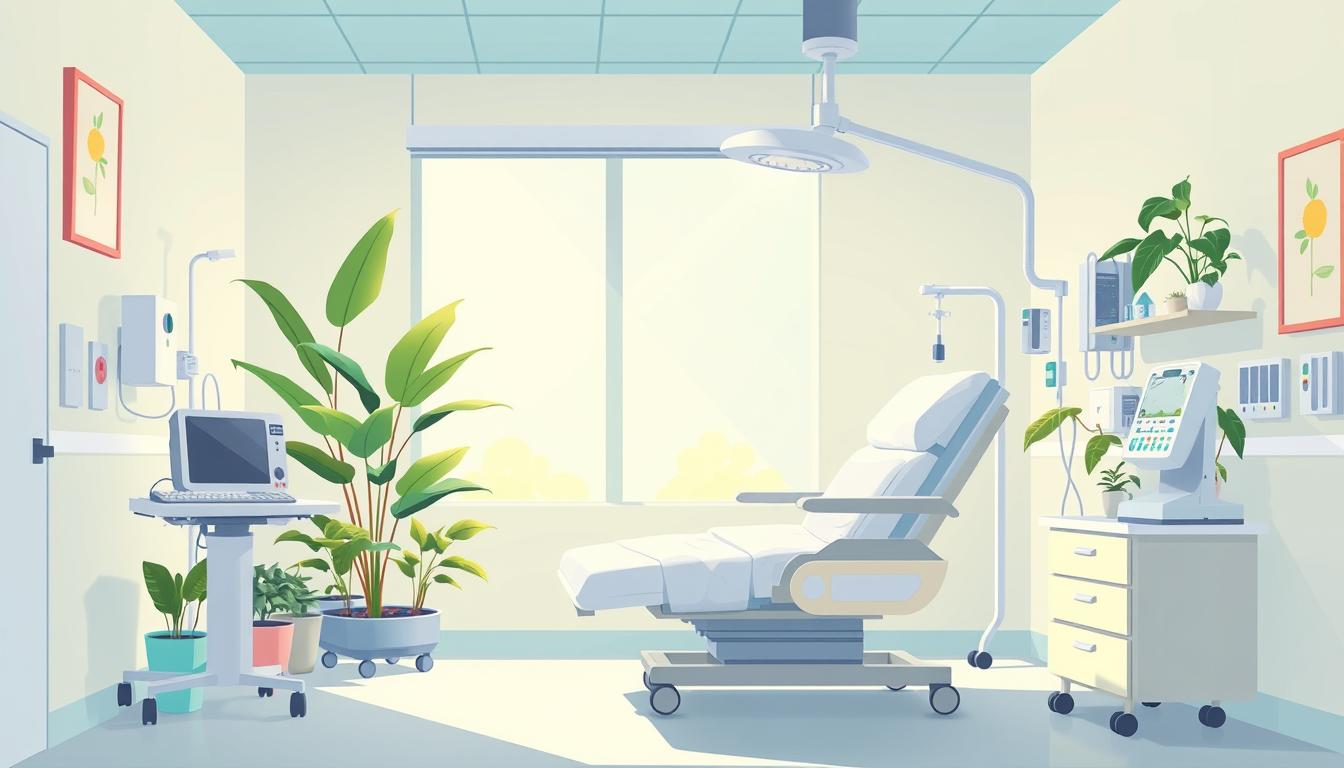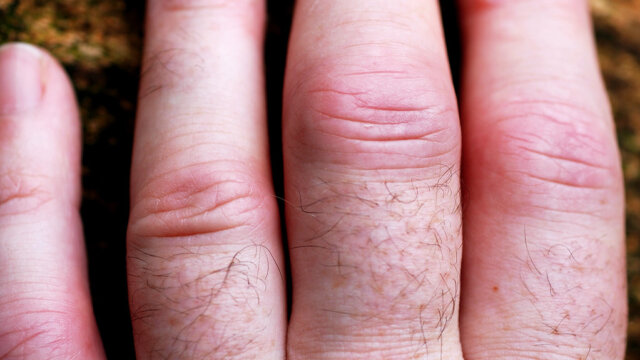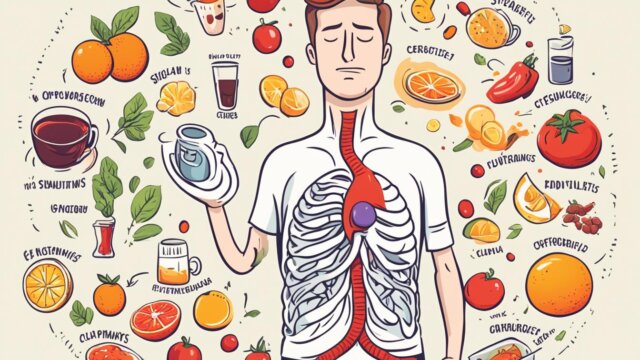FTC disclaimer: This post may contains affiliate links and we will be compensated if you click on a link and make a purchase.
One in three people in the United States will get cancer at some point. This shows how important it is to find good treatments. Thanks to chemotherapy, what was once a deadly disease can now be treated and sometimes cured. This article will help you understand chemotherapy, its history, how it works, and its types. It’s all about helping you understand this key part of cancer treatment.
Chemotherapy is mainly used to fight cancer because cancer cells grow fast. Doctors pick the right drugs based on the cancer type, stage, and the patient’s health. Most chemotherapy is given through an IV. How often and where you get treatment depends on the drugs and your body’s recovery.
Key Takeaways
- Chemotherapy has evolved from a terminal to a treatable and sometimes curable approach for cancer patients.
- The choice of chemotherapy drugs depends on the type and stage of cancer, previous treatments, and existing health conditions.
- Chemotherapy can be administered through various methods, with the intravenous (IV) route being the most common.
- Chemotherapy schedules vary depending on the cancer type and stage, the treatment goal, and the patient’s response to treatment.
- Regular doctor visits, exams, and tests are essential to monitor the effectiveness of chemotherapy.
Introduction to Cancer Chemotherapy
Cancer chemotherapy is a key part of modern cancer treatment. It gives hope and better chances for those with this serious disease. The history of chemotherapy started with X-rays and animal tumor models. German chemist Paul Ehrlich first used the term “chemotherapy” to treat diseases.
The Lindskog article in the 1940s was a big step. It showed nitrogen mustard could treat lymphoma.
History and Development of Chemotherapy
Chemotherapy improved with discoveries like actinomycin D and methotrexate. Drugs like thiopurines and 5-fluorouracil were also discovered. These discoveries made chemotherapy the main treatment for many cancers.
Goals and Functions of Chemotherapy
The main goals of chemotherapy are to stop cells from growing, prevent spreading, and kill tumor cells. Drugs work by messing with DNA and stopping cells from dividing. Because it goes through the whole body, it’s good for cancers that spread.
Chemotherapy can be given in different ways, like through veins or by mouth. The plan for treatment includes what drugs to use, how much, and how often.

“Chemotherapy is a type of cancer treatment using medicines to destroy cancer cells.”
The goals of chemotherapy depend on the cancer type and the patient’s history. These goals can be to cure cancer, stop it from spreading, slow it down, or ease symptoms in cancers that can’t be removed.
Cancer Chemotherapy
Cancer chemotherapy uses drugs to kill cancer cells all over the body. These drugs mess with the cell cycle and how cancer cells work, causing them to die. They are most effective when cancer cells are copying their DNA, as this is when they are most active.
The main goals of chemotherapy are to cure, control, or palliate cancer. Cure chemotherapy aims to get rid of cancer completely. Controlled chemotherapy tries to shrink tumors and stop cancer growth. Palliative chemotherapy helps ease symptoms and improve life quality.
Chemotherapy plans are made just for each person. They consider the cancer type, stage, and the person’s health.
Chemotherapy is given in cycles with breaks in between, allowing normal cells to recover from side effects. Sticking to the treatment plan is important to getting the most benefit.
Combination chemotherapy uses many drugs at once, making treatment more effective and helping prevent cancer cells from becoming resistant. Chemotherapy can also be used with other treatments, like surgery and radiation, to improve results.
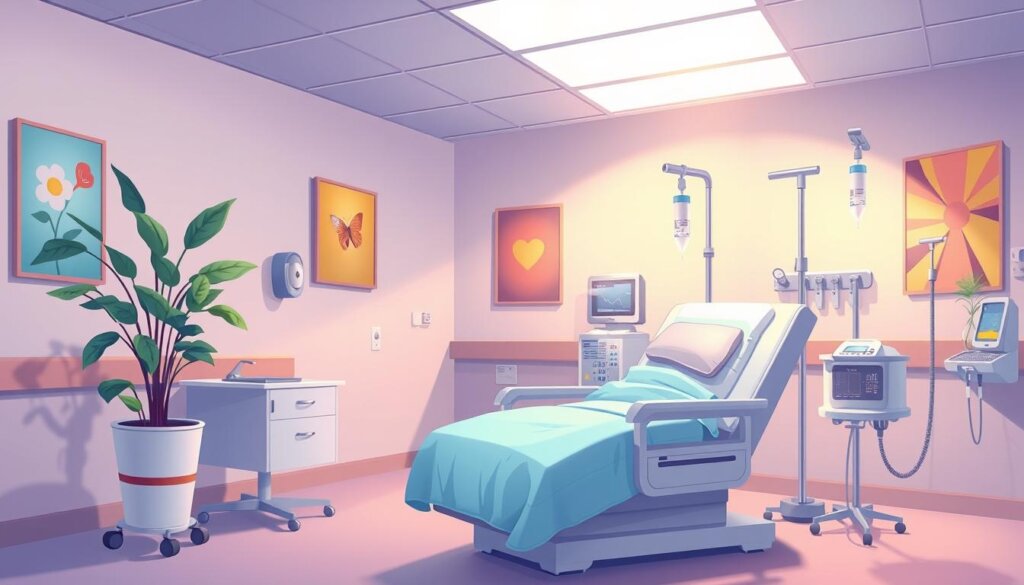
Chemotherapy drugs are grouped by how they work. They can be given for a short time or over several days. The body breaks down these drugs and excretes them through urine or feces.
Before starting chemotherapy, you might need tests and dental check-ups. You’ll also need to plan for work and home life changes.
“Chemotherapy is a type of cancer treatment that uses drugs to kill cancer cells. Most people have a combination of treatments for cancer, such as surgery with chemotherapy and radiation therapy.”
Other treatments like radiation and stem cell transplants can also be used to fight cancer.
Mechanisms of Chemotherapy Drugs
Cancer chemotherapy drugs work in different ways. Alkylating agents and antimetabolites are two main types. They target different parts of the cancer cell’s life cycle. Knowing how they work helps doctors choose the best treatment for each cancer type.
Alkylating Agents
Alkylating agents, like nitrogen mustards and platinum analogs, create unstable groups. These groups react with important parts of proteins and DNA, stopping DNA from making copies and leading to cell death. Alkylating agents are used for many cancers, including lung, breast, and leukemia. However, they can cause secondary leukemia, especially with higher doses.
Antimetabolites
Antimetabolites, like cytidine analogs, stop DNA from making copies by getting into DNA or making it hard for DNA and RNA to form. This stops cancer cells from growing. Antimetabolites are used for many cancers and can harm the heart in high doses.
It’s important to know how chemotherapy drugs work. This helps doctors pick the right treatment for each patient. By targeting cancer’s growth, these drugs can stop it from spreading.
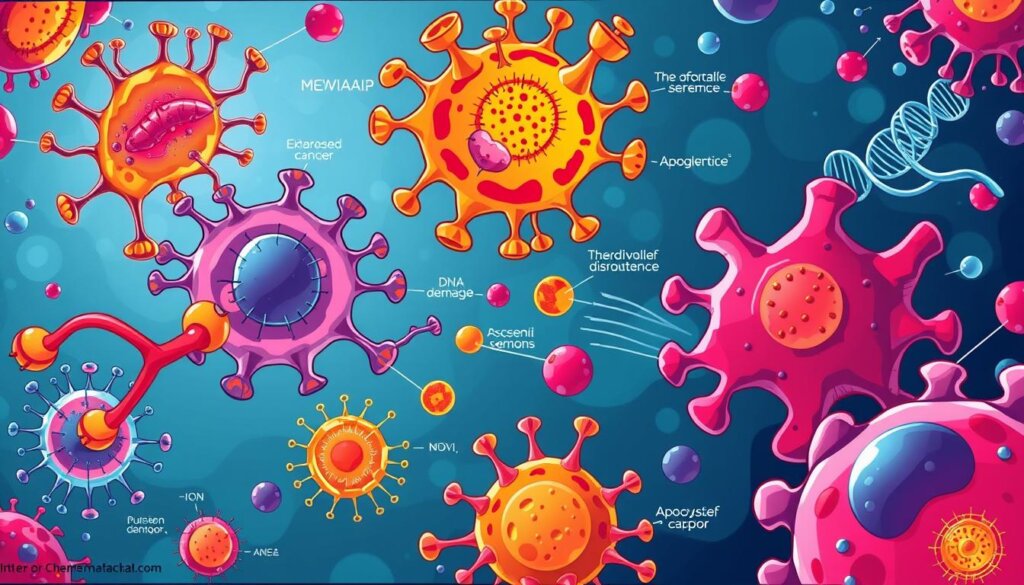
“Chemotherapeutic agents can be classified according to their mechanism of action, which allows for the targeted disruption of the cancer cell lifecycle.”
Types of Chemotherapy Regimens
Cancer chemotherapy comes in many forms, each one made for a specific patient and cancer type. These include neoadjuvant, adjuvant, and combination chemotherapy.
Neoadjuvant and Adjuvant Chemotherapy
Neoadjuvant chemotherapy is given before main treatments like surgery or radiation. It aims to shrink tumors for better treatment success. Adjuvant chemotherapy is given after initial treatments. It kills any leftover cancer cells and stops the disease from coming back.
Combination Chemotherapy
Combination chemotherapy uses many drugs at once. This method is more effective than using one drug alone. It targets cancer cells from different sides, improving treatment.
Chemotherapy plans include the drugs used, how much, how often, and for how long. These details are carefully planned to work together well. Known examples include ABVD for Hodgkin’s lymphoma, BEP for testicular cancer, and CHOP for non-Hodgkin lymphoma.

Choosing a chemotherapy plan is complex. It depends on the cancer type and stage, the patient’s health, and how they react to treatment. Research and clinical trials are always looking for new, better treatments. They aim to improve results and reduce side effects.
“The goal of combination chemotherapy is to attack the cancer cells from multiple angles, using drugs with different mechanisms of action to enhance the overall efficacy of the treatment.”
Chemotherapy Regimen | Cancer Type | Description |
|---|---|---|
MOPP | Lymphomas | The first successful combination chemotherapy was introduced in 1963. |
7+3 | Acute Myelogenous Leukemia | Comprises 7 days of Ara-C with 3 days of an anthracycline antibiotic. |
FEC-T | Breast Cancer | A combination regimen that combines multiple drugs to enhance treatment efficacy. |
FOLFIRINOX | Pancreatic Cancer | A combination regimen that combines multiple drugs to enhance treatment efficacy. |
Administration and Delivery Methods
Cancer chemotherapy’s success depends a lot on how it’s given. Most often, drugs are given through an IV. This method puts drugs into the blood through a catheter. It can be quick or take hours or even days.
Another common way is taking pills or capsules. Less often, drugs are given by injection into a muscle or under the skin. For some skin cancers, a cream is used right on the skin.
Injecting drugs into the spine and brain is rare but effective. For specific cancers, drugs are given directly to the tumor through arteries. This method is used for liver and limb cancers.
Drugs can also be given directly to the bladder or into the space around the abdomen. This targets tumors with less side effects. It’s a way to treat bladder and abdominal cancers.
Some patients get a special catheter for long-term chemo. Where and how chemo is given can change based on many factors. Treatment plans vary by cancer type and how well the body responds.
The kidneys and liver remove chemo drugs. How fast they leave the body depends on several factors. If cancer comes back, chemo might be tried again with different drugs.
“The choice of administration route depends on the specific drug, its pharmacokinetics, and the patient’s individual needs and preferences.”
Managing Side Effects of Chemotherapy
Chemotherapy for cancer can cause many side effects. These can make life harder for patients. Common problems include myelosuppression, nausea, vomiting, mucositis, and neurotoxicity. It’s important to have good care to handle these issues and keep the treatment going.
Common Side Effects
Nausea and vomiting are common side effects. If you vomit 3 to 5 times in 24 hours, or if nausea won’t go away, call your doctor. To avoid constipation, eat foods high in fiber and drink at least 8 glasses of water a day. If you have diarrhea, you might need to take special medicine. Try to avoid caffeine, spicy foods, and foods high in fiber.
Mouth sores, or mucositis, can occur 3 to 10 days after treatment starts. You’ll need to rinse your mouth often with special instructions. Neutropenia weakens your immune system. This means you should wash your hands a lot and stay away from sick people.
Supportive Care Strategies
Doctors can give you medicine to help with nausea and vomiting. You might need to try a few different medicines to find one that works for you. Some people find acupuncture helps with these symptoms.
About 70% of people get changes in taste while on chemotherapy. You can manage this by eating foods that don’t taste strong and using sweet marinades. Fatigue, or feeling very tired, affects 60-80% of patients. Rest, light exercise, and help from friends and family can help.
Anemia, or low red blood cells, affects 30-40% of patients. You’ll need blood tests and might need treatment. About 20-30% of patients experience “chemo brain,” or short-term cognitive problems. Using planners, staying mentally active, and living healthy can help.
Hair loss is common, affecting 50-100% of people. Use soft brushes, avoid harsh products, and consider wigs or head coverings. Many patients become more sensitive to sunlight after chemotherapy. Use sunscreen with SPF 30+, wear protective clothing, and stay out of the sun during peak hours.
Talking openly with your healthcare team is key to managing chemotherapy side effects. Tell them about any problems or changes right away so they can help you and ensure you get the right care.
Targeted Therapies and Immunotherapy
Cancer treatment has changed a lot. Now, we use targeted therapies and immunotherapy. Targeted therapies, like monoclonal antibodies and small-molecule inhibitors, target cancer cells and work by stopping cancer from growing and surviving.
These new methods are helping with many cancer types. They are becoming a big part of treating cancer.
Immunotherapy uses the body’s immune system to fight cancer. It includes immune checkpoint inhibitors. As seen in a 2006 “Advances in Immunology” publication, this method has made a big difference.
Studies, such as a 2010 New England Journal of Medicine study, show that treatments like ipilimumab have helped patients with metastatic melanoma live longer.
Targeted therapies and immunotherapy have greatly changed cancer treatment. Most targeted therapies are either small-molecule drugs or monoclonal antibodies. They are given in different ways, like pills or through a needle in a vein.
They can help some cancers live longer. But cancer cells can sometimes find ways to grow that these treatments can’t stop.
Immunotherapy is used for some cancers based on the patient’s condition and the cancer’s genetic changes. Treatments like pembrolizumab and nivolumab are used for non-small cell lung cancer (NSCLC).
Clinical trials for these treatments are happening everywhere. They are changing how we treat cancer. This gives hope to patients and their families.
Integrative and Complementary Approaches
Patients with cancer might look into integrative medicine and complementary therapies to feel better. These methods include nutritional supplements and mind-body practices. They help manage side effects and improve well-being. Integrative medicine combines traditional and alternative practices to care for the whole person.
Complementary and alternative medicine (CAM) is popular among cancer patients. They use practices like massage and green tea to deal with side effects of treatment. Conventional medicine treats symptoms with drugs and surgery, sometimes using CAM too.
Complementary medicine, or CAM, is used in conjunction with standard care, like acupuncture, for side effects. Alternative medicine, on the other hand, uses different methods instead of drugs. CAM includes mind-body therapies, biologically based practices, and more.
Some CAM therapies, like acupuncture and yoga, are safe and work well. Others might not work or could be harmful. Patients need to talk to their doctors before trying CAM.
Complementary Therapy | Prevalence in Cancer Patients | Evidence-based Benefits |
|---|---|---|
Acupuncture | Widely used | Effective for managing chemotherapy-related nausea and vomiting |
Yoga | Commonly used | Proven safe and effective for reducing stress and improving well-being |
Meditation | Frequently utilized | Shown to be beneficial for managing anxiety and improving quality of life |
Dietary supplements and herbal products might not be FDA-approved. They could be harmful in large doses. It’s best to tell doctors about these products. A healthy diet is key during treatment, but no food can cure cancer. Talk to doctors about your diet to get the right plan.
The use of complementary and alternative medicine (CAM) is common among cancer patients. It’s important to talk to healthcare teams about these approaches. This way, patients can improve their quality of life and manage their disease better.
“Integrative medicine emphasizes the mental, physical, and spiritual aspects of health, while respecting patient preferences.”
Cancer Chemotherapy: Ongoing Research and Clinical Trials
The field of cancer chemotherapy is always changing. Cancer chemotherapy research and clinical trials are looking into new drugs and ways to use them. They are also exploring how to target cancer cells more effectively.
Immunotherapy, like immune checkpoint inhibitors, is also being studied. This could lead to new ways to fight cancer.
Joining clinical trials can give patients access to new treatments, but only a small percentage of eligible patients do. This means many could miss out on treatments that could save their lives.
Many patients don’t know about the chance to try new treatments. Doctors need to tell them about these options.
Clinical trials help doctors learn how to handle the side effects of new treatments. Most trials don’t use placebos, so patients always get treatment. They also help figure out the best ways to use treatments.
Phase | Purpose | Participants |
|---|---|---|
Phase I | Determine drug safety and dosage | 15 to 50 patients |
Phase II | Examine how specific cancer types respond to experimental drugs or procedures. | Varies |
Phase III | Assess if a new treatment is superior to the standard one and may lead to FDA approval. | Varies |
Phase IV | Evaluate long-term benefits and side effects of new treatments | Varies |
Many immunotherapies are approved to treat different cancers, but hundreds more are in clinical trials. These trials might offer the best hope for cancer patients today.
Palliative Care and End-of-Life Considerations
For patients with advanced or metastatic cancer, palliative care is key. It aims to ease symptoms, manage pain, and boost the quality of life for patients and their families. This care may include treatments like chemotherapy and supportive measures like pain management and emotional support.
Talking about care wishes, advanced directives, and end-of-life planning is important. It ensures the patient’s wishes are respected and they get the right care. Advance directives help cancer patients make care choices if they can’t decide for themselves.
- For more on palliative care, check out GetPalliativeCare.org, CaringInfo, PalliativeDoctors, and the City of Hope Pain/Palliative Care Resource Center.
- Hospice care can start up to 6 months before death. It’s linked to better quality of life for patients and families.
- Supporting cancer patients emotionally means tackling fears like being abandoned or a burden. It’s about letting them share concerns and supporting their spirituality.
Caregivers need to look after their health to avoid burnout and emotional strain. Talking openly and reflecting on life with patients at the end can bring comfort and meaning.
“Research shows early talks about end-of-life care with a doctor can reduce stress and improve coping for patients with advanced cancer.”
Cancer can lead to death by spreading to healthy tissues and organs, causing organ failure, or from treatment side effects. Palliative chemotherapy plans varied, with 28.1% on one regimen, 35.6% on two, and 36.3% on three or more.
Talking openly with kids about a family member’s advanced cancer is vital. It helps them prepare and cope with loss. The main reason for stopping chemotherapy was disease progression.
Conclusion
Cancer chemotherapy has grown a lot, giving you many treatment choices and better chances of beating cancer. Knowing about its history, how it works, and different ways to use it helps you and your doctors plan the best care for you. New research and more treatments like targeted therapies and immunotherapy are helping fight cancer. A team effort in cancer care is key to getting the best results and helping you on your journey.
Good cancer care aims to cure or extend life while keeping quality of life high. Finding cancer early is key because it’s easier to treat and more likely to be cured. For those with advanced cancer, palliative care helps ease pain and suffering. In places with fewer resources, focusing on cancers like breast, cervical, and oral cancers is important, as well as childhood leukemia.
CRT with 5-fluorouracil plus mitomycin C is the main treatment for anal cancer. Adding high-dose radiation and brachytherapy after CRT helps control the disease better without too many side effects. Using intensity-modulated radiation therapy helps target tumors better and protects healthy areas. A big study showed that cisplatin-based CRT is better for keeping cancer away than chemotherapy followed by surgery in cervical cancer.
FAQ
What is the history and development of cancer chemotherapy?
Cancer chemotherapy started with X-rays and animal-tumor models. The first surgery, radical mastectomy, was also key. German chemist Paul Ehrlich coined “chemotherapy.”
The Lindskog article on nitrogen mustard’s success was a big step. Drugs like actinomycin D and methotrexate also helped advance it.
What are the goals and functions of cancer chemotherapy?
Chemotherapy aims to stop cell growth and prevent cancer from spreading. It works by messing with DNA, RNA, or proteins, which can lead to cell death.
How do chemotherapeutic agents work, and what are their different classifications?
These agents mess with cell growth by affecting DNA, RNA, or proteins. They can be classified by how they work. This includes alkylating agents and antimetabolites.
What are the different types of chemotherapy regimens?
Chemotherapy can be given in different ways, including before the main treatment, after radiation, or for cancer spread. Using many drugs at once is often more effective.
How are chemotherapeutic agents administered and delivered?
Drugs can be given in different ways. This includes IV, by mouth, or targeted methods. The choice depends on the drug and the patient’s needs.
What are the common side effects of chemotherapy, and how are they managed?
Side effects include low blood counts and nausea. Antiemetics and growth factors help manage these. This keeps the patient’s quality of life good.
What are targeted therapies and immunotherapy, and how are they integrated into cancer treatment?
Targeted therapies and immunotherapy are new treatments. They target cancer cells specifically. These methods are being used more in cancer treatment.
What are the integrative and complementary approaches that can be used in conjunction with cancer chemotherapy?
Patients might use supplements and mind-body practices. These can help with side effects and improve well-being, and they are used in conjunction with standard treatments.
What is the current state of cancer chemotherapy research and clinical trials?
Cancer chemotherapy is always improving. Research is looking at new drugs and ways to deliver them, and new treatments like molecular therapies and immunotherapy are being tested.
How are palliative care and end-of-life considerations addressed in the context of cancer chemotherapy?
For advanced cancer, palliative care is key. It helps with symptoms and pain. It also includes treatments to control cancer and support care.
